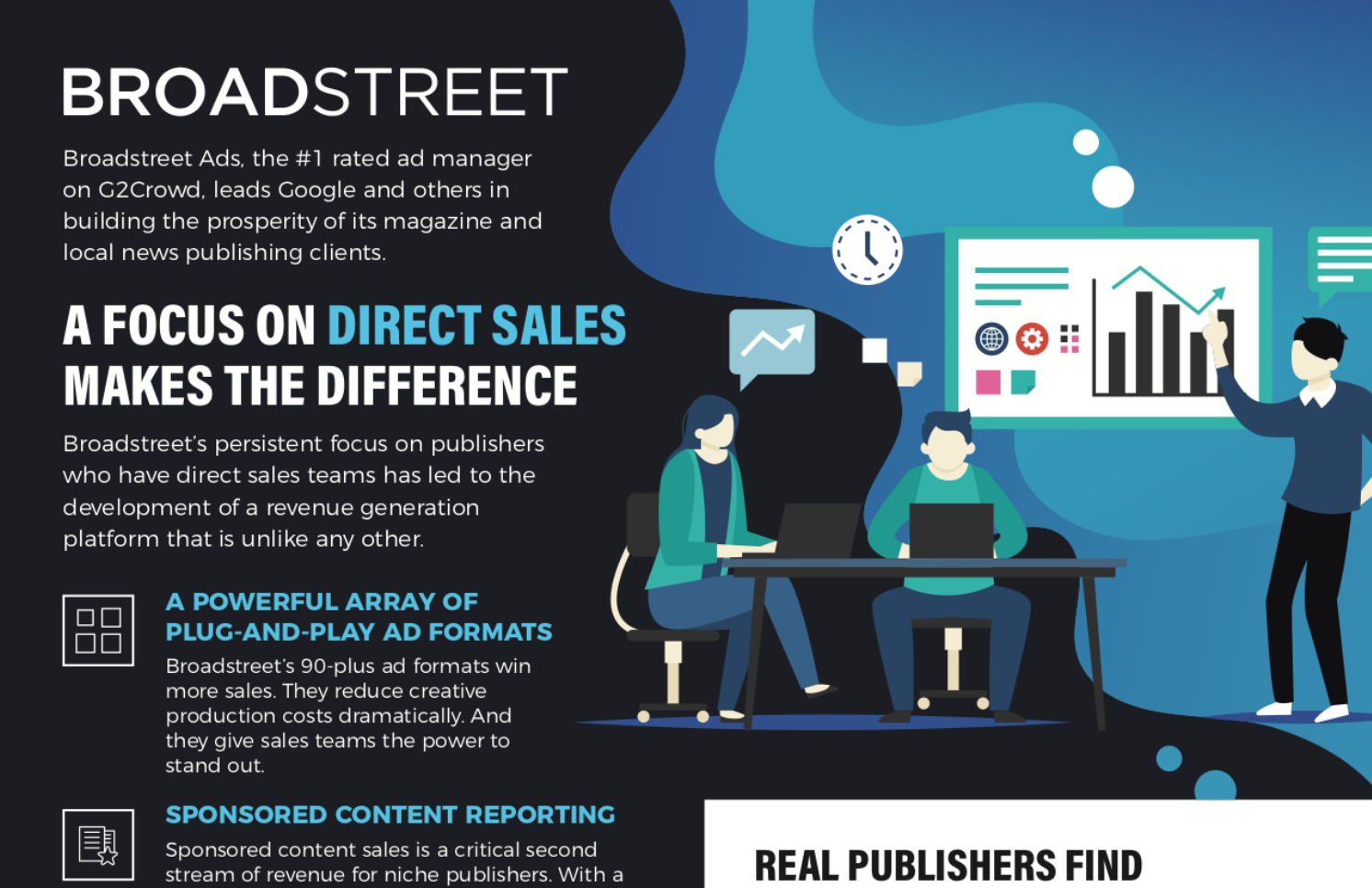Flat Pricing or CPM? How to Price Local Advertising
Smart, flexible, understandable pricing. That’s the key to sustained business growth for most magazines and hyperlocal publishers. But what constitutes smart, flexible, understandable pricing varies depending on who you talk to. That’s why setting a strategy to price local advertising is more of an art than a science.
Years of dealing with the large ad networks have left many smaller publishers with the false belief that CPM-based pricing is the only option available. That’s just not true anymore.
CPM pricing is a variable model, where advertisers pay based on the number of impressions on a webpage. CPM is an acronym for Cost-Per-Thousand. (The “M” represents the Roman numeral for 1,000.) The listed CPM amount reflects the cost the advertiser pays for 1,000 ad impressions on a webpage. For example, if a small publisher charges $3 CPM, then the advertiser would pay $3 for every 1,000 impressions.
CPM pricing is very popular among larger publishers, however, it’s decreasing in popularity among the publishers of regional magazines and smaller websites, including hyperlocal news sites, because this method to price local advertising is just not predictable.
In order to sustain continued business growth, publishers need a predictable and sustainable stream of revenue. It’s tough to make payroll and meet all the other financial demands that come with being a small business owner when revenue is built on impressions and page views, both of which can be out of the publisher’s control.
The issues surrounding Facebook’s recent changes to its news feed algorithm have brought concerns over use of the CPM model to price local advertising into the forefront. What happens if Facebook’s adjustments lead to a decrease in referral traffic? Or what if changes in Google’s search results make it harder for readers to land on a publisher’s site? If the publisher is relying on a CPM model to price local advertising and getting paid by advertisers based on the number of impressions, they’re looking at a significant drop in revenue.
Growing concerns over the whims of Silicon Valley giants determining small publishers’ futures have created a renewed interest in flat-rate pricing. Flat-rate has become so popular in the last year that we dove into the topic in our eBook, Ten Advantages: How Magazine and Hyperlocal News Publishers Will Win In the Era of Facebook and Google.
Flat rate pricing is as simple as it sounds. Publishers set their prices—for example, $3,000 per month for a banner ad on the homepage—and advertisers go into each campaign knowing exactly what to expect. Rather than spending their time explaining how much 100,000 impressions will cost at $11 CPM, sales reps can spend their time reaching out to new prospects and following up with any advertisers who are still on the fence.
Benefits of using the flat-rate model to price local advertising include:
- Easier for advertisers to understand
- Keeps the focus on value, rather than pricing
- Allows publishers to build sustainable revenue plans
Small advertisers will still ask what kind of ROI they’re getting from digital campaigns. That’s human nature. But sales reps invariably have an easier time explaining how their advertising packages work when they utilize a flat-rate pricing strategy.
Taking traffic, impressions, and page views out of the picture, sales reps can focus on the value and the brand building that comes along with advertising with a popular publication in the local community. What sales reps can’t deliver in traffic guarantees, they can deliver in prominence and value-add.
Beyond the interactions that sales reps have with advertisers, flat-rate pricing also allows for more accurate and efficient planning for publishers.
Let’s look at how a hyperlocal news publisher could use flat-rate pricing to meet revenue goals.
With a revenue goal of $500,000 and five major website sections, the publisher would need to bring in $100,000 per section, per year, or just over $8,000 per section, per month.
A few ideas for how the publisher could reach those goals:
- Find five advertisers to sign up for a roadblock for each section at $1,600 per month
- Sell five sponsored articles each month at $1,000 a piece
- Charge $2,000 for a wallpaper ad that inserts itself in the full background of a page the day before a special community event
With flat-rate pricing, publishers have complete flexibility over how much they charge, and they can raise or lower pricing based on demand.
Flat-rate pricing also gives publishers a way to re-frame their advertising as brand sponsorships. Non-profits have used this approach with great success for years. Asking local businesses for support, rather than selling paid advertisements, positions the publication as a benefit to the community as a whole.


